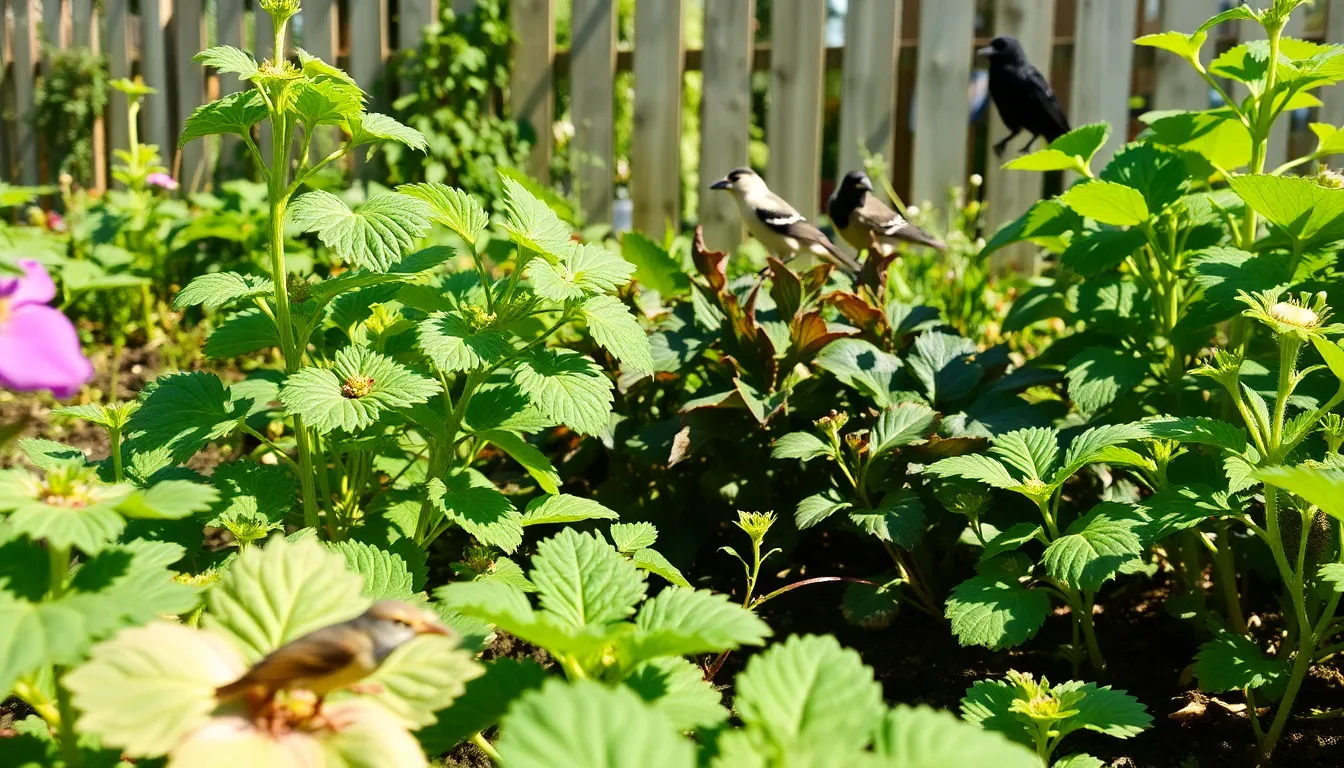Every gardener knows the joy of watching their plants thrive, but lurking in the shadows are those pesky garden pests ready to turn a flourishing paradise into a battleground. From munching caterpillars to stealthy aphids, these uninvited guests have a knack for ruining the hard work and dreams of even the most dedicated green thumbs.
Common Garden Pests
Garden pests pose significant challenges for gardeners. Aphids often infest tender plant shoots, draining vital nutrients. Caterpillars feast on leaves, leading to substantial foliage loss.
Spider mites thrive in dry conditions, causing stippling and webbing on plant surfaces. Whiteflies, resembling small moths, suck sap from the underside of leaves and may transmit diseases.
Thrips impact flowers and foliage, leading to discolored spots. Slugs and snails cause damage by eating holes in leaves, especially during damp weather.
Each of these pests can severely hinder a garden’s health, requiring diligent monitoring. Integrated pest management practices offer effective strategies for control. Physical barriers, like row covers or traps, help prevent infestations.
Chemical pesticides may prove useful, but organic options often align better with sustainable gardening. Regular inspection of plants aids in early detection, making control measures more effective.
Employing beneficial insects, such as ladybugs or lacewings, naturally mitigates pest issues. They prey on common pests, helping maintain a balanced ecosystem within the garden.
Understanding the life cycles of these pests enables proactive management. Gardeners can minimize damage while preserving their plants’ vitality. By recognizing the signs of an infestation early, effective measures can be implemented swiftly.
Types of Common Garden Pests

Common garden pests disrupt plant health and can lead to significant damage. Understanding these pests helps gardeners take effective action.
Insects
Insects such as aphids, caterpillars, spider mites, whiteflies, and thrips are notable threats. Aphids, small and sap-sucking, weaken plant vitality. Caterpillars damage leaves by consuming them voraciously. Spider mites, often difficult to spot, cause stippling and discoloration on leaves. Whiteflies congregate under foliage, sucking sap and transmitting diseases. Thrips not only feed on plants but also carry viral infections. Close monitoring identifies these pests early, aiding in effective management.
Rodents
Rodents like rabbits, voles, and mice pose threats to gardens. Rabbits consume young seedlings and tender shoots, leading to loss of crops. Voles tunnel underground and can damage roots, destabilizing plants. Mice, although small, may consume seeds and seedlings, hindering growth. Gardeners can use fencing, traps, or repellents to deter these pests. Understanding their habits allows for targeted prevention strategies.
Birds
Birds such as sparrows, crows, and finches can be garden nuisances. Sparrows feed on seeds and tender plants, stressing young growth. Crows display intelligence and often steal fruits and seeds, impacting harvests. Finches, while beautiful, can also peck at tender seedlings. Using netting, scare devices, or planting decoy crops proves effective in keeping birds at bay. Knowing their feeding patterns helps gardeners safeguard their plants.
Signs of Pest Infestation
Detecting pest infestations early is vital for protecting gardens. Recognizing specific signs can help gardeners act quickly.
Physical Damage
Visible damage on plants indicates potential pest issues. Chewed leaves, holes in foliage, or discolored patches often signal pest activity. Wilting plants can also point to infestations, as pests may hinder nutrient uptake. For example, caterpillars produce significant leaf damage, while aphids present stunted growth. Flowers with missing petals or unusual spots suggest pests like thrips. Roots may show signs of tunneling due to underground pests, such as root weevils. Each form of physical damage serves as a warning to gardeners that pests may be present.
Presence of Droppings
Droppings frequently accompany a pest problem. Small, dark pellets or irregular shapes often indicate the presence of insects like caterpillars or rodents. Gardeners should look closely at plants and surrounding soil for these droppings. Signs of droppings appear near damaged areas, signaling active feeding. If droppings are plentiful, quick action is essential to prevent further damage. Different pests leave different droppings, helping identify the culprits. Regular inspections can reveal droppings, enabling timely intervention and preventing widespread issues.
Control Methods for Common Garden Pests
Effective control methods exist to manage garden pests, ensuring plants remain healthy. Gardeners often choose between organic and chemical solutions based on their preferences and situations.
Organic Solutions
Natural remedies offer safe options for pest control. Neem oil acts as a repellent for many insects, disrupting their life cycles. Diatomaceous earth provides effective physical barriers, damaging exoskeletons and dehydrating pests. Companion planting benefits pest management by attracting beneficial insects. For instance, marigolds deter nematodes and aphids. Beyond these, insecticidal soaps effectively eliminate soft-bodied pests, like aphids and spider mites, without harming the environment. Regularly applying these methods allows for proactive control while maintaining garden health.
Chemical Solutions
Synthetic pesticides serve as another avenue for pest control. Broad-spectrum insecticides eliminate various pests quickly, though they may also affect beneficial insects. Systemic pesticides penetrate plant systems, targeting pests that feed on treated vegetation. Careful application reduces risks associated with chemical residues. Integrated pest management often combines chemical and non-chemical approaches, optimizing effectiveness while minimizing harm to the ecosystem. Selecting pesticides with targeted action ensures minimal disruption to beneficial insects, promoting sustained plant health.
Preventive Measures
Effective preventive measures minimize pest infestations and maintain garden health. Implementing proactive strategies plays a crucial role in protecting plants.
Proper Garden Maintenance
Regular garden maintenance significantly reduces pest infestations. Pruning plants helps improve air circulation, allowing sunlight to reach all parts of the foliage. Keeping the garden tidy by removing debris, fallen leaves, and weeds eliminates hiding spots for pests. Providing adequate spacing between plants prevents overcrowding, which can create a microclimate favorable to pests. Additionally, watering plants early in the morning allows foliage to dry before evening, reducing fungus and mildew that attract pests.
Use of Barriers
Physical barriers serve as effective deterrents against pests. Installing row covers protects seedlings from flying insects while allowing sunlight and rain to nourish plants. Using garden netting keeps birds from accessing fruits and vegetables without restricting airflow. Placing copper tape around raised beds deters slugs and snails with its irritating surface. Applying these barriers enhances plant resilience and minimizes the likelihood of pest-related damage.
Conclusion
Managing common garden pests is essential for maintaining a healthy and thriving garden. By understanding the various types of pests and their behaviors gardeners can take proactive steps to protect their plants. Regular monitoring and early detection play crucial roles in preventing infestations from escalating.
Utilizing integrated pest management practices allows for a balanced approach that combines organic and chemical solutions tailored to specific pest issues. Implementing preventive measures and creating a resilient garden environment can significantly reduce the likelihood of damage.
With the right strategies in place gardeners can enjoy the fruits of their labor while keeping pesky invaders at bay.

